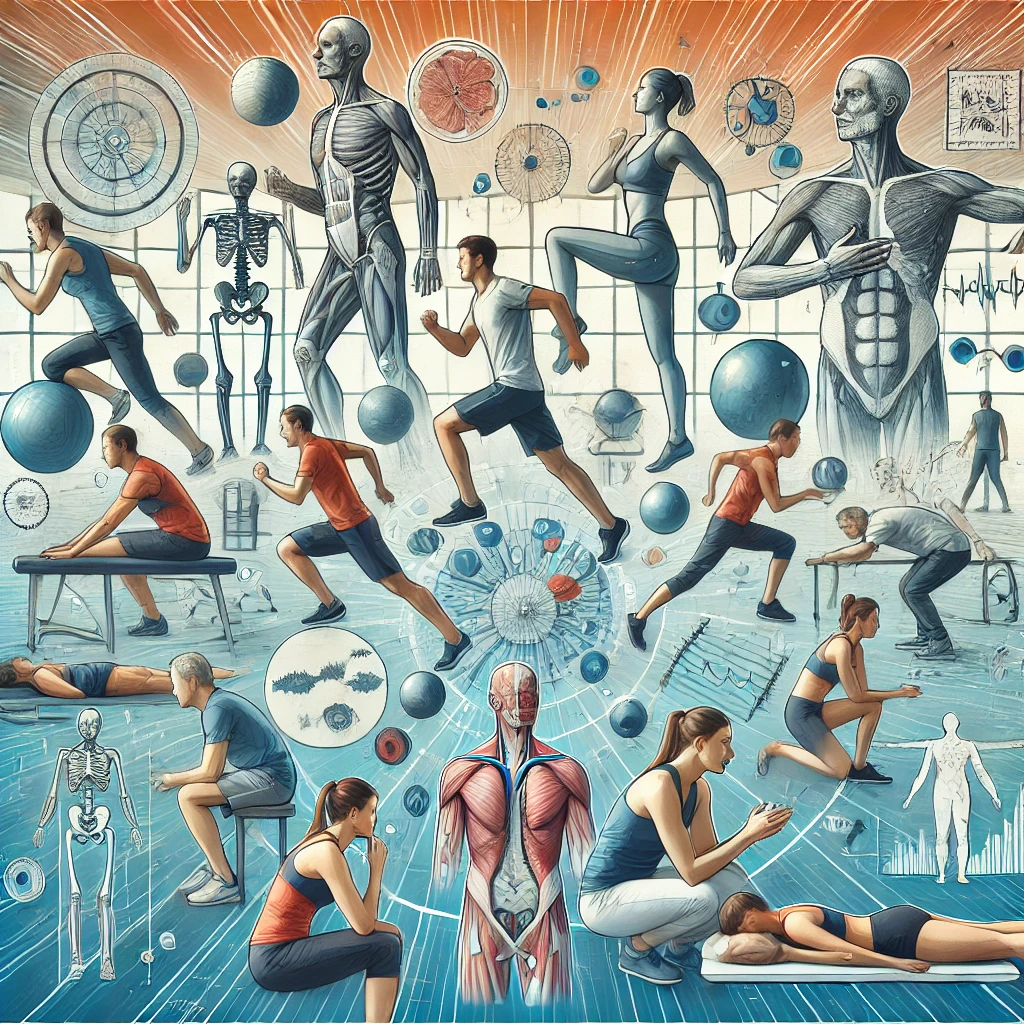Kinesiology is the scientific study of human movement, focusing on the mechanics and physiological aspects of movement in the context of health and wellness. It combines elements of biomechanics, anatomy, physiology, and neuroscience to understand how the body moves and how movement affects overall health.
Key Components of Kinesiology
- Biomechanics:
- This branch studies the mechanical aspects of human movement, analyzing forces and how they affect motion. Biomechanics helps in understanding how different movements can lead to injury or improve performance.
- Exercise Physiology:
- Exercise physiology examines the body’s responses to physical activity and the physiological changes that occur with exercise. It focuses on improving physical performance, recovery, and overall health.
- Motor Control and Learning:
- This area studies how the brain and nervous system control movement and how skills are acquired and refined through practice. Understanding motor control can enhance rehabilitation and athletic training.
- Anatomy and Physiology:
- Kinesiology relies heavily on knowledge of human anatomy (the structure of the body) and physiology (how the body functions) to understand movement and its impact on health.
- Sports Science:
- Kinesiologists often work with athletes to improve performance, prevent injuries, and design training programs tailored to specific sports or activities.
Applications of Kinesiology
- Rehabilitation:
- Kinesiologists often work in rehabilitation settings, helping patients recover from injuries, surgeries, or chronic conditions through tailored exercise programs and movement strategies.
- Fitness and Health Promotion:
- Professionals use their knowledge of movement to design fitness programs aimed at improving overall health, enhancing physical performance, and preventing chronic diseases.
- Ergonomics:
- Kinesiologists assess workplace environments to improve ergonomics, helping to reduce the risk of injuries related to repetitive motions or poor posture.
- Sports Performance:
- In sports settings, kinesiologists work with athletes to enhance performance through specific training regimens, biomechanical analysis, and injury prevention strategies.
- Education:
- Kinesiology is also an academic discipline, and graduates may teach physical education, health science, or sports studies at various educational levels.
Conclusion
Kinesiology is a multifaceted field that plays a critical role in understanding human movement and its implications for health and performance. By integrating knowledge from various scientific disciplines, kinesiologists contribute to improving health, enhancing athletic performance, and promoting overall well-being. Whether in rehabilitation, fitness, or sports, kinesiology is essential for anyone interested in the science of movement.






